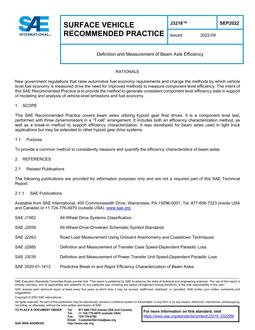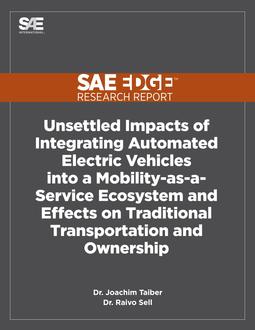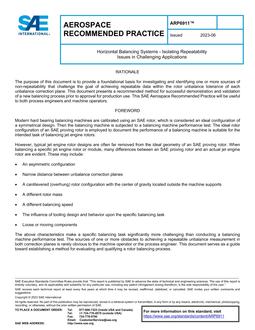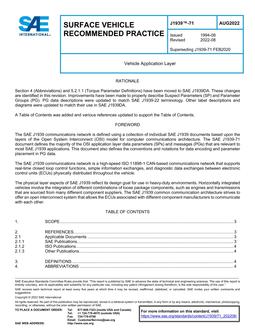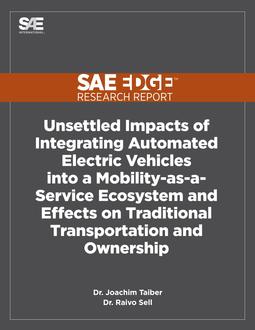
SAE EPR2019004
The current business model of the automotive industry is based on individual car ownership, yet new ridesharing companies such as Uber and Lyft are well capitalized to invest in large, commercially operated, on-demand mobility service vehicle fleets. Car manufacturers like Tesla want to incorporate personal car owners into part-time fleet operation by utilizing the company’s fleet service. These robotaxi fleets can be operated profitably when the technology works in a reliable manner and regulators allow driverless operation.
Although Mobility-as-a-Service (MaaS) models of private and commercial vehicle fleets can complement public transportation models, they may contribute to lower public transportation ridership and thus higher subsidies per ride. This can lead to inefficiencies in the utilization of existing public transportation infrastructure. MaaS platforms can also cause a reduced reliance on parking infrastructure (e.g., street parking lanes and parking garages) which can contribute to an improvement in overall traffic flow, and a reduction in capital investment for commercial and residential real-estate development. Urban planning can be better centered around the true mobility needs of the citizens without sacrificing valuable space for vehicles that are inactive most of the time. A key challenge is the transition phase where traditional forms of car ownership and transportation coexist with new forms of mobility services (before true MaaS platforms are fully optimized). Another fundamental issue is determining the true cost of car ownership and establishing ideal cost structures for on-demand mobility services in order to replace the need of owning a car. This needs to occur without compromising subsidized public transportation which provides affordable transportation for low-income groups.
NOTE: SAE EDGE™ Research Reports are intended to identify and illuminate key issues in emerging, but still unsettled, technologies of interest to the mobility industry. The goal of SAE EDGE™ Research Reports is to stimulate discussion and work in the hope of promoting and speeding resolution of identified issues. SAE EDGE™ Research Reports are not intended to resolve the issues they identify or close any topic to further scrutiny.
Product Details
- Edition:
- 1
- Published:
- 12/20/2019
- Number of Pages:
- 24
- File Size:
- 1 file , 3 MB
- Note:
- This product is unavailable in Belarus, Russia, Ukraine

